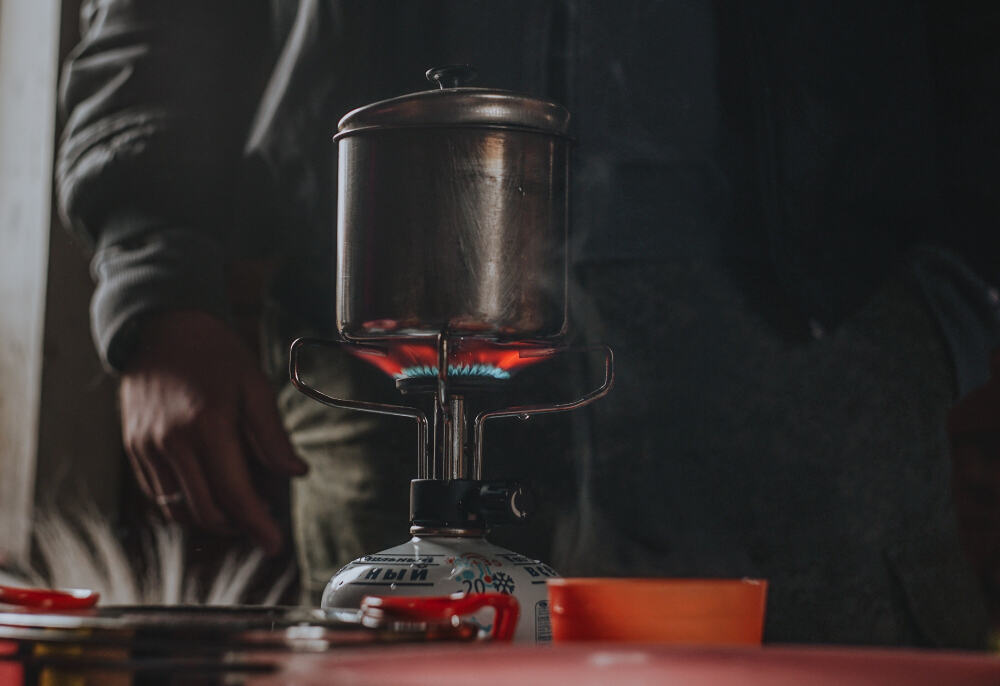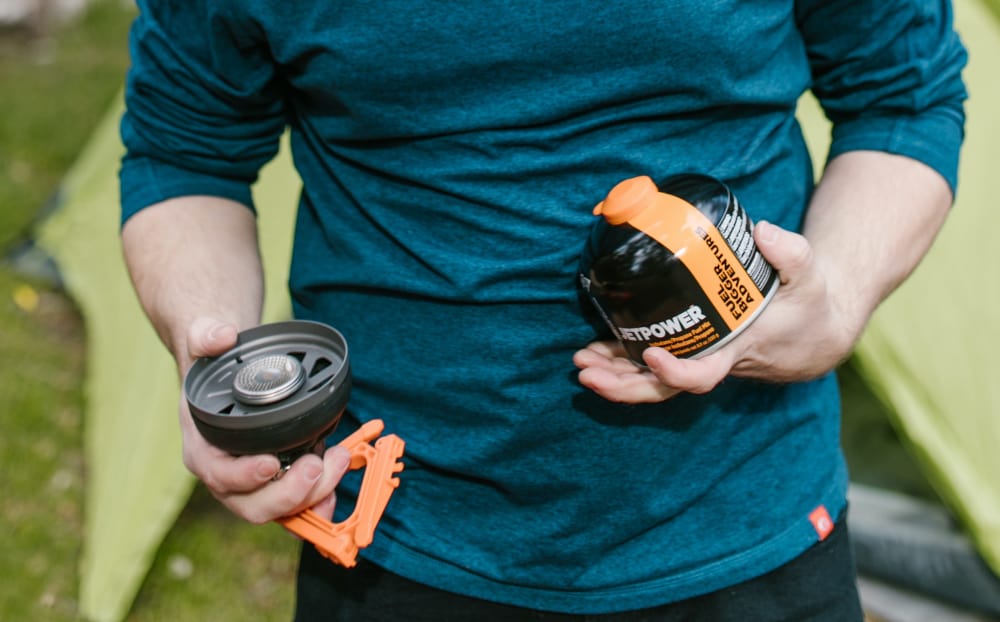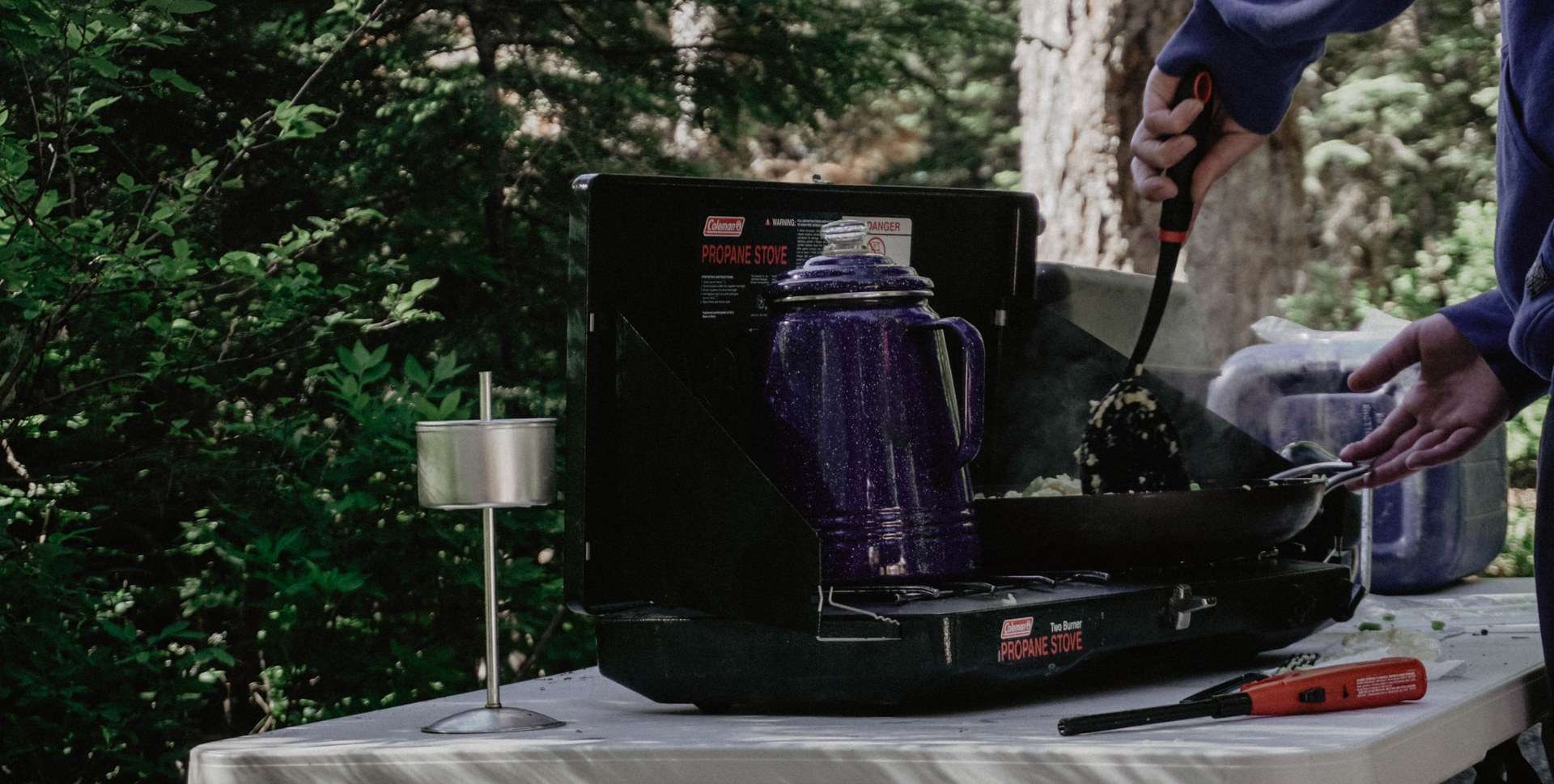You can’t beat the convenience of a Coleman Fuel Canister. But once the hike or camping trip is over, and you’ve got an empty canister to dispose of, what do you do with it?
You can’t throw it in the trash. In some places, it’s even illegal to do that, so how should an eco-conscious person like you dispose of Coleman fuel canister correctly?
This is how to dispose of Coleman fuel canisters:
Take empty Coleman fuel canisters to a recycling center for disposal. Contact a hazardous waste disposal center for drop-off or collection. Some camping shops will also accept empty canisters. Do not dispose of empty fuel canisters in regular recycling as residual gas may cause an explosion.
All empty camping stove fuel canisters are hazardous materials, especially when they are recycled. So, what are the best ways to dispose of a Coleman fuel canister? Keep reading for all the answers.
Related: Looking for a top camping stove? Check out our list of the best jetboil camping stoves.

5 Ways To Safely Dispose of A Coleman Fuel Canister
Because the rules and regulations for disposing and recycling fuel canisters are different in each area, you will need to research what will work in your area.
1. Contact Your Local Recycling Centre
Ask them if they accept empty Coleman fuel canisters. In some cases, the recycling center will have the facilities to empty and dispose of them safely, and they will receive canisters. Others will not, but first, you must ask.
2. Contact Your Local Authorities And Enquire About Hazardous Waste Disposal
Many cities have drop-off days and local drives to collect hazardous materials. Find out when the next one is in your area, and keep the canisters until then. If your city does not have a program to dispose of fuel canisters, try option three.
3. Contact A Local Hazardous Waste Disposal Company
In many cities and counties, there are often companies that will collect hazardous waste. Be aware that some companies charge for collecting empty fuel canisters while others have a business model that allows them to collect or receive them for free. While paying for this service may seem unnecessary, consider the environment and the difficulty of other options.
4. Find A Gas Bottle Exchange In Your Area
Enquire from local gas bottle exchange companies if they take empty Coleman fuel canisters. Even though you are not exchanging the canister, gas bottle exchange centers will often take empty canisters for recycling.
5. Contact A Propane Tank Dealer
Like the gas bottle exchange center, contact propane tank dealers in your area and see if they accept empty fuel canisters.
Prepare The Canister For Normal Metal Recycling
If there are no recycling centers or gas dealers in your area that will take the canister for you, you will need to puncture and crush the canister yourself and put it in your regular steel recycling.
Whatever way you settle on, make sure it is a workable solution for you. If disposing of your Coleman fuel canisters becomes too much of a chore, you’re more likely to stop doing it, so find the easiest and best solution and go with it.
There may be other options in your area, but one of these five ways to dispose of a Coleman fuel canister should work for you!

Two Ways To Make A Coleman Fuel Canister Safe For Recycling
Rather than using a make shift way to ensure a Colman fuel canister is safe for recycling, Coleman and other companies provide ways to do this safely and conveniently.
The two easiest ways are to use a Coleman Green Key or a Jetboil Crunchit Recycling Tool:
1. Use A Coleman Green Key To Empty A Canister
In 2008 Coleman released a great tool to empty all residual gas from a canister to render it safe for recycling. The instrument was called a Green Key; as you guessed it, it was bright green.
The idea was to let recycling companies know the canister was safe to recycle, but many recycling companies did not take to the concept and still would not accept fuel canisters. In 2010 Coleman discontinued the program.
If you have one of these tools, it is a great way to empty the canister. If you don’t have one of these tools, there are other ways to dispose of your Coleman fuel canister.
2. Use A Jetboil Crunchit Recycling Tool To Empty A Canister
If you do not have a Green Key, why not try a Jetboil Crunchit Fuel Canister Recycling Tool from Amazon.
A Jetboil Crunchit tool can be attached to the fuel canister like a stove or light unit, except the tool has a small hole designed to vent any residual gas. Hearing a hissing noise should be expected; it means the tool is working.
Always vent empty fuel canisters outdoors or in a well-ventilated area. Do NOT have any open flames nearby and avoid venting lots of gas at once.
With all the residual fuel vented from the canister, use the tool to pierce the canister in a few places.
You may want to stick a label to the pierced canister to let the recycling center know it is vented, perforated, and therefore safe to handle.

FAQ’s
Why Can’t You Leave A Coleman Fuel Canister In The Trash?
Throwing a fuel canister in the trash or putting it out with regular recycling is dangerous because you are dealing with flammable materials.
If the canister is crushed and there is any residual gas left in the canister, even a tiny amount, when it is crushed or compressed, any spark will start a fire or even cause an explosion.
These explosions are dangerous for anyone in the vicinity of the canister, and many recycling centers are now hesitant to handle empty fuel canisters, and you can see why.
There are usually places to take the empty canisters or safe ways to completely empty and prepare canisters for recycling. Please avoid throwing canisters in the trash.
How Do I Completely Empty A Fuel Canister Before Recycling?
Suppose you find a recycling center or a hazardous waste disposal company willing to take the canisters. In that case, it is always a good idea to ensure the fuel canister is completely empty before transporting it or disposing of it.
Two ways to make sure your Coleman fuel canister is completely empty:
- Burn off any excess or residual fuel by attaching a lamp or gas burner fitting to the canister and lighting it.
- Use a canister recycling tool to vent any excess fuel from the valve. Most canister recycling tools will have a way to release excess fuel before puncturing the canister.
An empty fuel canister is safer for you and anyone else handling the canister. Always ensure you have emptied it entirely before disposing of your Coleman fuel canister or doing anything else with it.
Before puncturing the containers, recycling employees will also take the valves out of them as part of the recycling procedure.
Follow this step-by-step guide to vent any residual fuel:
- Place the empty fuel canister in an outdoor area. Ensure no other open flames or ignition sources are near the canister.
- Attach an appliance like a light or stovetop to the empty canister.
- Open the control valve and light the stovetop.
- Keep an eye on the appliance until the flame or light goes out.
- Close the control valve and let the light or stove cool down before handling.
- Remove the canister from the light or stove top and take it to the recycling center.
Can I Use A Hammer And Nail To Puncture Your Fuel Canister?
Always remember that Coleman fuel canisters are hazardous materials. All fuel canisters are dangerous and must be treated cautiously.
When treated with caution and vented and pierced correctly, Coleman fuel canisters can be disposed of in several safe ways, but they can also be more hazardous if not treated with caution.
If your Coleman fuel canister does not take a Green Key or you do not have a canister recycling tool, do not use a hammer and nail to puncture it. Any spark from the nail on the metal container may cause a fire or explosion.
Safety first! Do not use any method of puncturing the fuel canister that will create a spark.
FAQ
How do I know if my Coleman propane tank is empty?
You can determine if your Coleman propane tank is empty by feeling its weight. A full tank will feel heavy, while an empty tank will feel significantly lighter. Additionally, you can perform a leak test by spraying soapy water on the valve and connections, and checking for bubbles. If bubbles form, the tank is likely empty and ready for disposal.
How do I dispose of old Coleman fuel?
Old Coleman fuel should be disposed of properly to avoid environmental harm. The best way to dispose of old Coleman fuel is to take it to a local hazardous waste facility, where it can be safely disposed of in an environmentally responsible manner. You can also check with your local recycling center or waste disposal facility for specific instructions on how to properly dispose of old fuel.
Is Coleman fuel hazardous waste?
Yes, Coleman fuel is considered a hazardous waste due to its flammability and potential to cause harm to the environment if not disposed of properly. It is important to handle and dispose of Coleman fuel according to local and federal regulations to minimize the risk of the tanks harming people and the environment.
Wrapping up on disposing Coleman fuel
In conclusion, it is important to properly dispose of empty Coleman fuel canisters to avoid harm to the environment and people. The best options for disposal include taking propane canisters to a recycling center, a hazardous waste disposal center, or a camping shop. It is important to note that canisters and propane cylinders should not be disposed of in regular recycling or landfill as residual gas in the cylinder may cause an explosion.
By following the information and guidelines for proper disposal of propane tanks, eco-conscious individuals can ensure the safe and responsible handling of hazardous materials.
